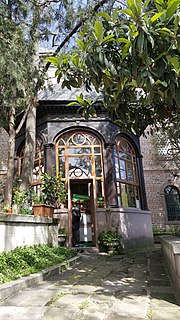 W
WAhmed Izzet Pasha, known as Ahmet İzzet Furgaç after the Turkish Surname Law of 1934, was an Ottoman general during World War I. He was also one of the last Grand Viziers of the Ottoman Empire and its last Minister of Foreign Affairs.
 W
WAmcazade Köprülü Hüseyin Pasha (1644–1702) of the Köprülü family, was the grand vizier of the Ottoman Empire under Mustafa II from September 1697 until September 1702. Amcazade Koprulu Huseyin Pasha was close to ordinary Ottoman Muslim subjects being a member of the Mevlevi Order. He was known to be concerned with the needs of the common people as well as those of the military and bureaucratic classes.
 W
WSerdar Ferhad Pasha was an Ottoman statesman of Albanian descent. He was twice grand vizier of the Ottoman Empire between 1 August 1591 and 4 April 1592 and between 16 February 1595 and 7 July 1595.
 W
WOhrili Hüseyin Pasha was an Ottoman nobleman, military figure and statesman of Albanian origin. He was Grand Vizier of the Ottoman Empire in 1621. He was from the city of Ohrid.
 W
WKöprülüzade Fazıl Ahmed Pasha was an Ottoman nobleman and statesman, who was a member of the renowned Köprülü family of Albanian origin, which produced six grand viziers of the Ottoman Empire.
 W
WKöprülü Mehmed Pasha was the founder of the Köprülü political dynasty of the Ottoman Empire, a family of viziers, warriors, and statesmen who dominated the administration of the Ottoman Empire during the last half of the 17th century, an era known as the Köprülü era. He helped rebuild the power of the empire by rooting out corruption and reorganizing the Ottoman army. As he introduced these changes, Köprülü also expanded the borders of the empire, defeating the Cossacks, the Hungarians, and most impressively, the Venetians. Köprülü's effectiveness was matched by his reputation.
 W
WLütfi Pasha was an Ottoman Albanian statesman, general, and Grand Vizier of the Ottoman Empire under Suleiman the Magnificent from 1539 to 1541.
 W
WMehmed Ferid Pasha was an Ottoman statesman. He served as Grand Vizier of the Ottoman Empire from 15 January 1903 until 22 July 1908, at the time when the Sultan restored the 1876 Constitution following the Young Turk Revolution. Other than Ottoman Turkish he spoke the Albanian, Arabic, French, Italian, and Greek languages.
 W
WAyas Mehmed Pasha (1483–1539) was an Ottoman statesman and grand vizier of the Ottoman Empire from 1536 to 1539. He was an Albanian born in Delvinë. His father was from the city of Shkodra, in the north of Albania, and his mother was from Vlorë, in the south of Albania. He went to Istanbul while his father was living there, and following his orders entered Ottoman service under the Devshirme practice and eventually became Agha of the Janissaries. He participated in the Battle of Chaldiran (1514) and the Ottoman–Mamluk War (1516–17). During 1520–1521 he was beylerbey of Anatolia Eyalet and governor of Damascus. During the reign of Suleiman the Magnificent, he served as beylerbey of Rumelia Eyalet and was made a vizier after the Ottoman conquest of Rhodes in 1522. He also participated in the Battle of Mohács, Siege of Vienna, and the war in Iraq (1534–1535).
 W
WMustafa Naili Pasha was an Ottoman statesman, who held the office of Grand Vizier twice during the reign of Abdülmecid I, the first time between 14 May 1853 and 29 May 1854, and the second time between 6 August 1857 and 22 October 1857.
 W
WAlemdar Mustafa Pasha was an Ottoman military commander and a Grand Vizier born in Khotyn in then Ottoman territory Ukraine in 1765. He was of Tosk Albanian origin, from the village of Goskovë near Korçë. Both alemdar and bayraktar mean "the standard bearer" and were the names given to the same rank in the Janissary corps. Alemdar Mustafa Pasha is often regarded as one of the pioneering public figures, who recognized the need of a modern army, as he was instrumental in setting up the French military mission in 1796.
 W
WSaid Halim Pasha was an Ottoman statesman of Egyptian origin who served as Grand Vizier of the Ottoman Empire from 1913 to 1917. He was one of the perpetrators of the Armenian genocide, and was later assassinated by Arshavir Shirakian as part of Operation Nemesis, a retribution campaign to kill perpetrators of the Armenian genocide.
 W
WŞemsi Ahmet Pasha also known as Chamsi-Pasha; was a prominent Ottoman statesman of Albanian origin who occupied numerous high-ranking political posts, serving at different stages as the Ottoman governor of Damascus, Rûm, Sivas, Anatolia and Rumelia, and subsequently succeeding Sokollu Mehmet Pasha as grand vizier of the Ottoman Empire in 1579.
 W
WKoca Sinan Pasha was an Albanian Ottoman Grand Vizier, military figure, and statesman. From 1580 until his death he served five times as Grand Vizier. In 1594, he ordered the burning of Saint Sava's remains on the Vračar plateau.
 W
WZaganos or Zagan Pasha was an Ottoman Albanian military commander, with the titles and ranks of kapudan pasha and the highest military rank, grand vizier, during the reign of Sultan Mehmed II "the Conqueror". Originally a Christian who was conscripted and converted through the devşirme system, he became a Muslim and rose through the ranks of the janissaries. He became one of the prominent military commanders of Mehmed II and a lala – the sultan's advisor, mentor, tutor, councillor, protector, all at once. He removed his rival, the previous Grand Vizier Çandarlı Halil Pasha the Younger, amid the fall of Constantinople. He later served as the governor of Thessaly of Macedonia.